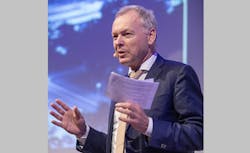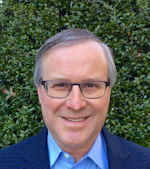As of January 1, 2024, Ewit Roos is leaving PhotonDelta to join the deep-tech venture capital firm PhotonVentures as General Partner. Roos co-founded PhotonDelta eight years ago and, as CEO, helped the organization develop into a recognized and well-funded integrated photonics industry accelerator focused on scaling the supply of photonic integrated circuits (PICs) and their applications.
As CEO, he led the development of an extensive ecosystem of Netherlands-based universities, research labs, 60+ company partnerships, and investors. This work culminated in PhotonDelta receiving commitments for €1.1 billion of investment from the Dutch government and corporate partners to deploy in the coming five years. Plans call for €600 million to fund the industrialization of core photonics technologies and products, €250 million for applications integration and upstream products, and €250 million for further developing the ecosystem.
Throughout the years, PhotonDelta helped found and fund over 10 deep-tech photonics startups out of the ecosystem. In 2023, PhotonVentures, founded as a private investment fund within PhotonDelta, became independent, taking over the Ventures Capital activities incubated within PhotonDelta.
Until a new CEO is named, Executive Board Member Laurens Weers will manage PhotonDelta.
John Dexheimer: I’ve seen the photonics community talk for over two decades about how to bring more semiconductor processes and workflows into photonics at scale to drive volumes and costs, yet these efforts often fell short as the ecosystem was not really built out, from design tools and foundries to packaging and testing. How have the Netherlands and PhotonDelta managed to take such a leadership position, and why is now the time to drive it?
Ewit Roos: The Netherlands has a rich history with deep talent pools and IP in strong universities and has created many important commercial contributions to the global semiconductor sector, with only the U.S., China, and Taiwan shipping more semiconductors annually. ASML, STM, NXP, and Philips NV have long been global leaders in developing and building major businesses in and around semiconductors and photonics.
We have been active in the Horizon EU fundings and partner efforts, so we can leverage those relations and investments with companies in the Netherlands and European semiconductor businesses. On timing, there is a huge pent-up demand to accelerate the supply chain to scale photonics applications as diverse as quantum, medical, automation/autonomy, AR/VR, AI, and further push improvements and TCO in communications bandwidth and energy efficiency in all applications. The move to PICs and semiconductor-style integration is required. Since this is a global challenge for the semicon industry, PhotonDelta has worldwide collaborations to industrialize integration technologies.
Dexheimer: You already are Pan-European with partners and arguably global as you have key leaders such as Synopsys, ASML, and Aixtron as part of the ecosystem. As you transition into the VC role, comment on how you leverage these relations.
Roos: We spun out the fund so it could scale more aggressively by bringing in more investment capital sources ourselves and adding co-investors more readily. Also, we have a very specific framework to tap synergies among the ecosystem players, and each expands the others even further. A good example is our investment in Smart Photonics, an independent InP foundry that PhotonVentures invested in in 2020 after several years of incubation at Eindhoven University of Technology. Key among their partners on the equipment processing side was ASML.
In 2023, ASML, NXP, and VDL (a multibillion-dollar global manufacturing firm) joined with several instructional investors to invest over $100 million of capital into Smart Photonics to drive scaling operations.
One of our most recent investments was in Scantinel, an FMCW LiDAR-on-a-chip firm spun out of Zeiss in Germany. Operating at 1550 nm, they require InP and so pursued synergistic supply-chain relations with our ecosystem partners. We joined Zeiss and Scania in this round.
In general, because of our ecosystem involvement and our Pan-EU relations, we have deep connections that enable us to support management teams to “fail fast,” pivot, and simultaneously pursue a high probability of success paths through the network effects.
Dexheimer: Thank you for the context and examples. Let’s look forward and discuss how you envision shaping the portfolio in the next three to seven years. There are several ways to think about desired or likely allocations of capital. For example, what end applications mix might you see, and what mix of Netherland-domiciled startups versus other origins?
Roos: With our first fund, expected to close with $100 million-plus, we will target 10 to 12 new investments. The majority will be in seed and series A, with reserves for add-ons. We will pursue investments when they add value through our ecosystem to help in scaling. We will continue with follow-on investments in core device/materials platform firms and “upstream” applications firms where photonics brings value-add to the solution.
Our ecosystem partners can provide substantial value in accelerating initial designs, time to market, and scaling. We also have and will call on corporate partners in our network to help mentor portfolio management teams and enable open channel and customer relationships globally.
As to end markets, we believe there are opportunities to pursue within quantum, medical, core photonics materials and packaging, sensing, AR/VR, and—of course—communications and aspects of computing. We might see up to 25% of Fund-I investments made in non-Netherlands headquartered firms, but where they have well-defined synergistic relationships with our existing portfolio and ecosystem. In Fund-II, we could see that percent increase, but expect it to be EU-centric.
Dexheimer: While corporate investors will invest for windows on technology and future pipelines of M&A and customer access, institutional money is return-driven. Please discuss “the end game” for the fund investors.
Roos: The fund has a VC standard 10-year life with possible extensions. That means while we will do early-stage deals, we want to see defined paths to milestones, scaling, and their potential exit landscape. For a first investment at an early stage, we may own 15% to 25% of the firm, but with add-on rounds and other investors joining, we may be diluted to below double-digit percentage in several years. There are three routes to monetizing such an investment: a sale-merger of the firm, an IPO, or a “secondary” sale of a portion of the private stock of a firm that has become an increasingly deep market. The time window may be five to seven years from the first investment, often seven to 12 years—and if all cylinders fire, it can be shorter. Our ecosystem provides a substantial platform to aid in continuously developing paths and options.
Dexheimer: PhotonDelta has stated they see 200 new startups coming out of their ecosystem by 2030. That is an impressive goal. Please comment on that goal, and what it means for your fund.
Roos: There is a rich and pent-up ecosystem to create startups here and in many parts of the EU. Not all startups will be able to scale. However, I think our fund will be able to see many more viable, backable ventures. Thus, it’s unlikely we will be able to do all those ourselves, but we are in a position to select many of the best and develop them for great outcomes for investors and for contributions to scaling photonics into many important markets.

